Satellite systems
- Ground Station – Piotrowo campus
- Ground Station – Kąkolewo campus
- Mission Controll Center – Faculty of Computing and Telecommuncations
- Cubesat Nanosatellites
- PolyITAN-3-PUT
- PW6U
- C-band Satellite Radio
- Team
Studies on satellite systems have been conducted at the Institute of Radiocommunications of PUT since 2019. They were initiated through collaboration with the Igor Sikorsky Kyiv Polytechnic Institute that - owing to its participation in space programs since the 1970s - has had a significant amount of scientific achievements in the field.
Due to the experience of the Institute of Radiocommunications team, the research and development work conducted mostly concern radio communication systems used to communicate with satellites. This requires proper ground infrastructure, as well as a satellite segment. PUT currently has at its disposal a ground station at the Piotrowo campus, launched in late 2022, and another ground station in the Kąkolewo campus, still under construction. They are controlled from a center located at the WIiT faculty building at Polanka St. The satellite segment will consist of Cubesat nanosatellites that are expected to be placed on the Earth’s orbit in 2023 and 2024.
These projects open up entirely new possibilities for PUT in the field of space exploration, which is particularly important in view of the new course in Aviation and Cosmonautics being launched at our University.



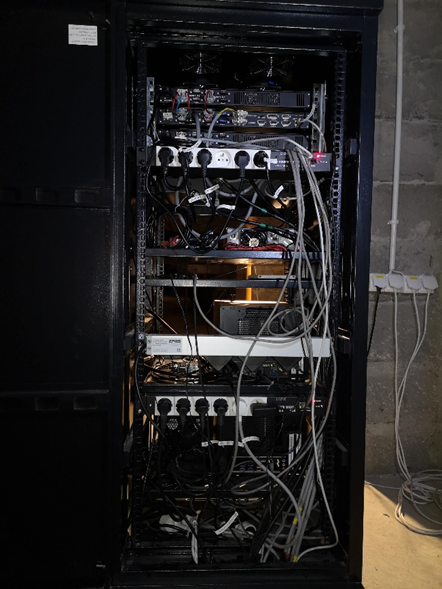
Ground stations
Ground station - Piotrowo campus
The ground station is located at the Piotrowo campus, on the roof of building A3 (8th floor). Due to this location, antennas can easily track low Earth orbit (LEO) satellites over the entire horizon. The station is composed of two antenna masts with turntables for antennas. The first mast supports multi-element Yagi-Uda antennas for the 144MHz band with a 14,5dB gain and for the 435MHz band with a 17dB gain with circular polarization, along with low-noise preamplifiers. Mounted on the other mast is a 3m parabolic antenna with a 43dB gain equipped with a septum feed transmitter for the 5,8GHz band, and a low-noise amplifier. VHF and UHF bands are popularly used in communications with Cubesat satellites to transmit Telemetry, Tracking and Command (TT&C) signals. The C band, on the other hand, will be used in the fast data transmission system currently under construction at the Institute of Radiocommunications. Next to the masts, we also installed a video recorder for antenna system monitoring, and a weather station collecting data on current weather conditions.
Directly beneath the masts, in the attic of the building, we set up a rack cabinet containing turntable controllers with feeders, as well as transceivers with necessary computer hardware. Signals in VHF and UHF bands are being transmitted using an ICOM IC-9700 radio station, coupled with a PC, whereas te reception is handled by SDR FunCube Dongle and USRP B210 receivers, also coupled with a PC. In the near future, we plan to replace the ICOM station with a transmitter using the SDR USRP B210 module and a high-end 50W amplifier, which would enable transmission speed of over 4800 bit/s, available in the current setup. The ground station is fully remote-controlled by the Management Center located at the Institute of Radiocommunications.
Ground station - Kąkolewo campus>
Execution of the PolyITAN-3-PUT project has prompted the Institute of Radiocommunications team to apply for additional funds from the Wielkopolska Regional Operational Program for 2014-2020, awarded by the Wielkopolska Province Marshal. The received funds (under the project called AEROSFERA 2.0 - Aerocosmic Data Transmission) enabled the construction of a professional satellite communications ground station located at the airport in Kąkolewo near Grodzisk Wielkopolski, co-owned by PUT. The station will include two 11m high lattice towers. One of them will support a 4.5 m-diameter professional parabolic antenna placed under a dome protecting it from weather conditions. The antenna will be supplied by the Israeli company Orbit Communication Systems Ltd. It is designed to transmit and receive signals in the S-band (TX 2025-2120 MHz, RX 2200-2300 MHz) and receive signals in the X-band (RX 8000-8500MHz), with right- and left-handed polarization. The other tower will host a 4.5 m-diameter parabolic antenna receiving signals in the C-band (RX 5830-5850MHz) with circular polarization, and 4 Yagi-Uda antennas addressing VHF (144MHz) and UHF (435MHz) bands and adjusted for operation with vertical, horizontal and circular polarization (switched remotely). All antennas are able to trace objects moving all over the firmament.

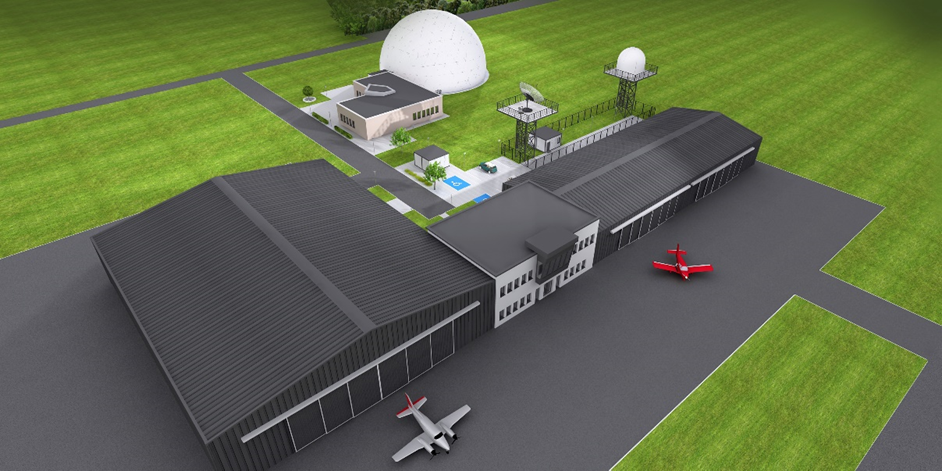
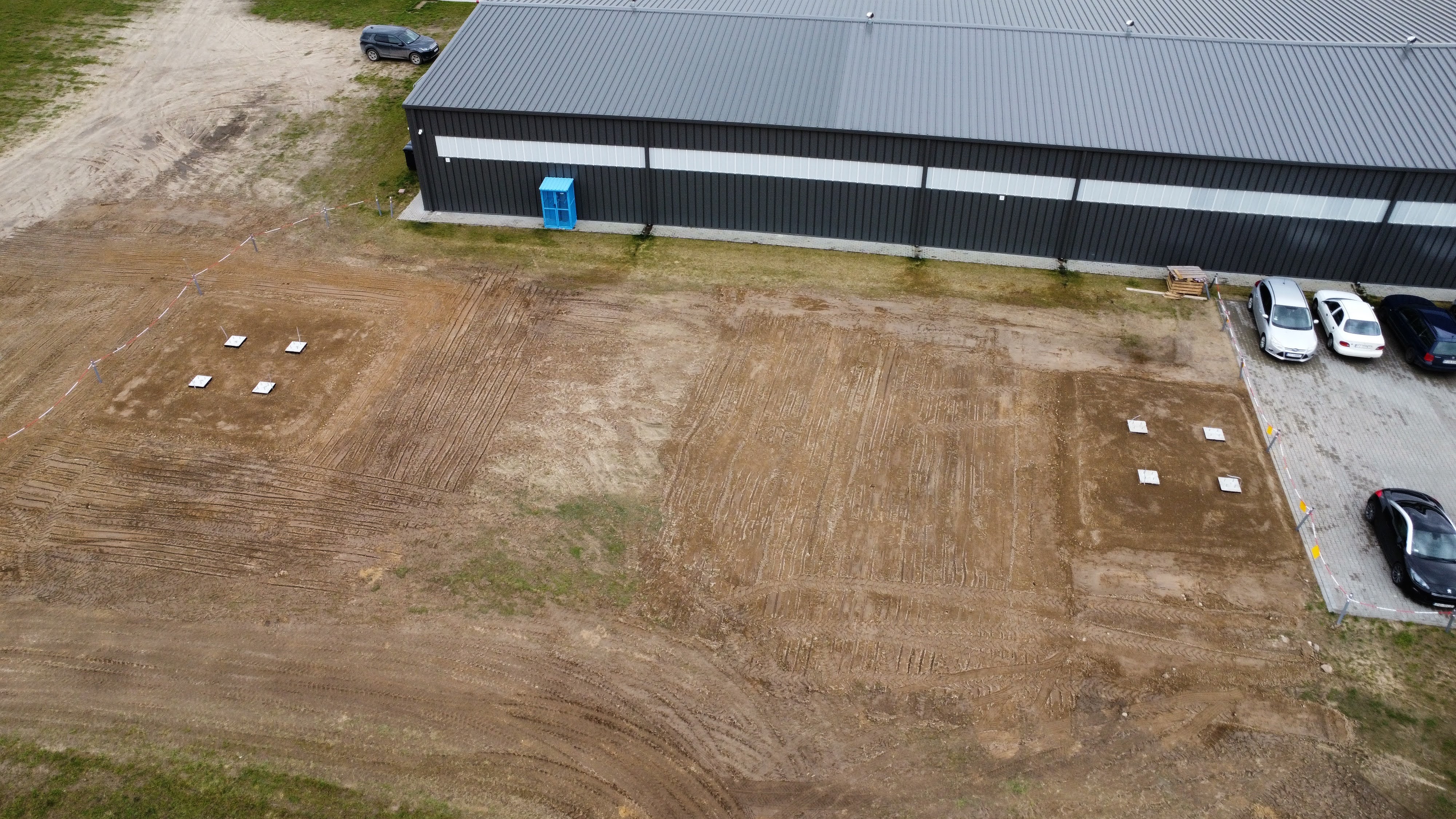
Stage I – foundations ready – 15.04.2023
Aerial photography thanks to Paweł Mejza
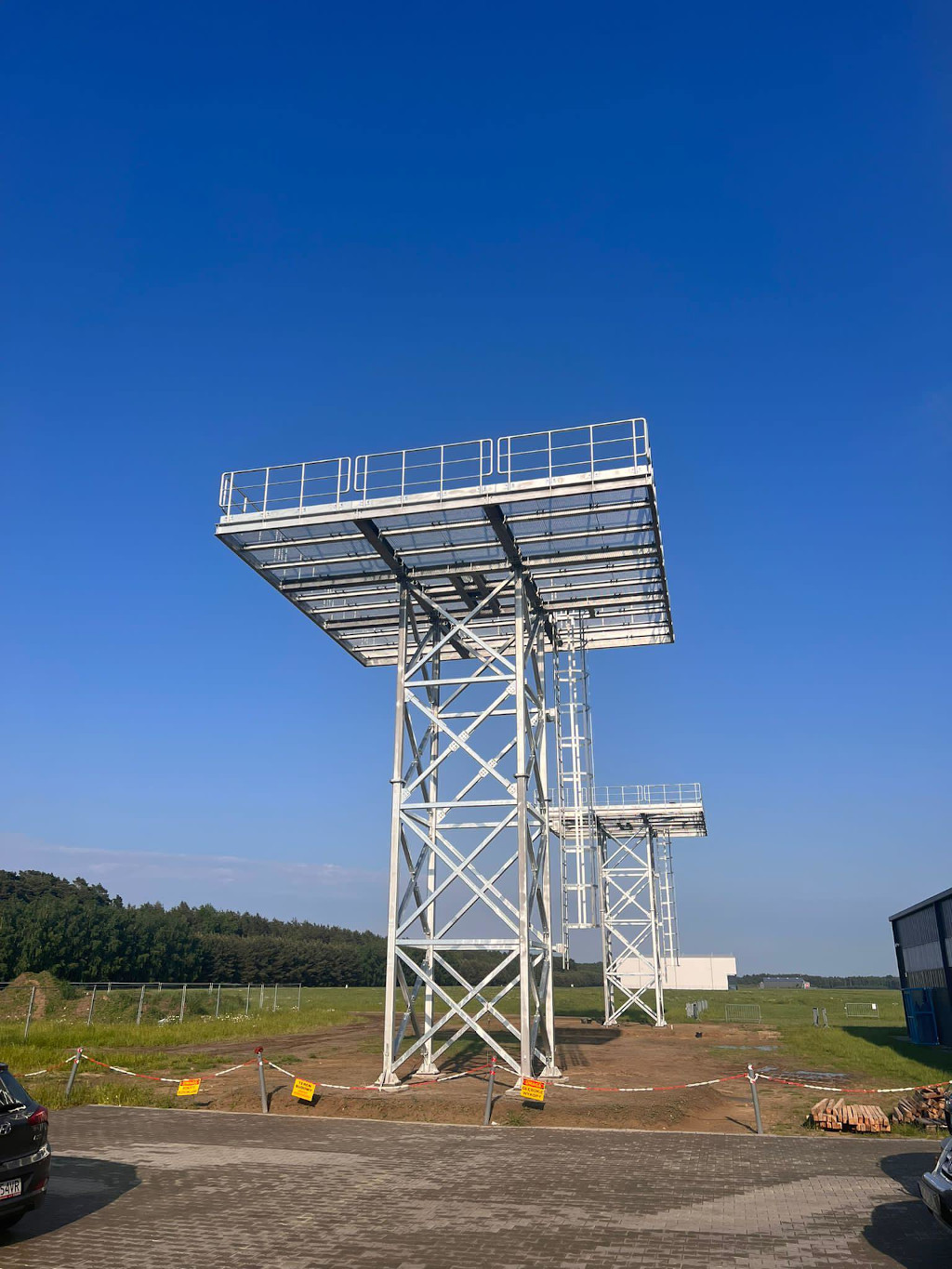
Towers on site and awaiting antenna system installation – 04.07.2023

22.11.2023 - Installation of a 4.5 m antenna for the S/X bands
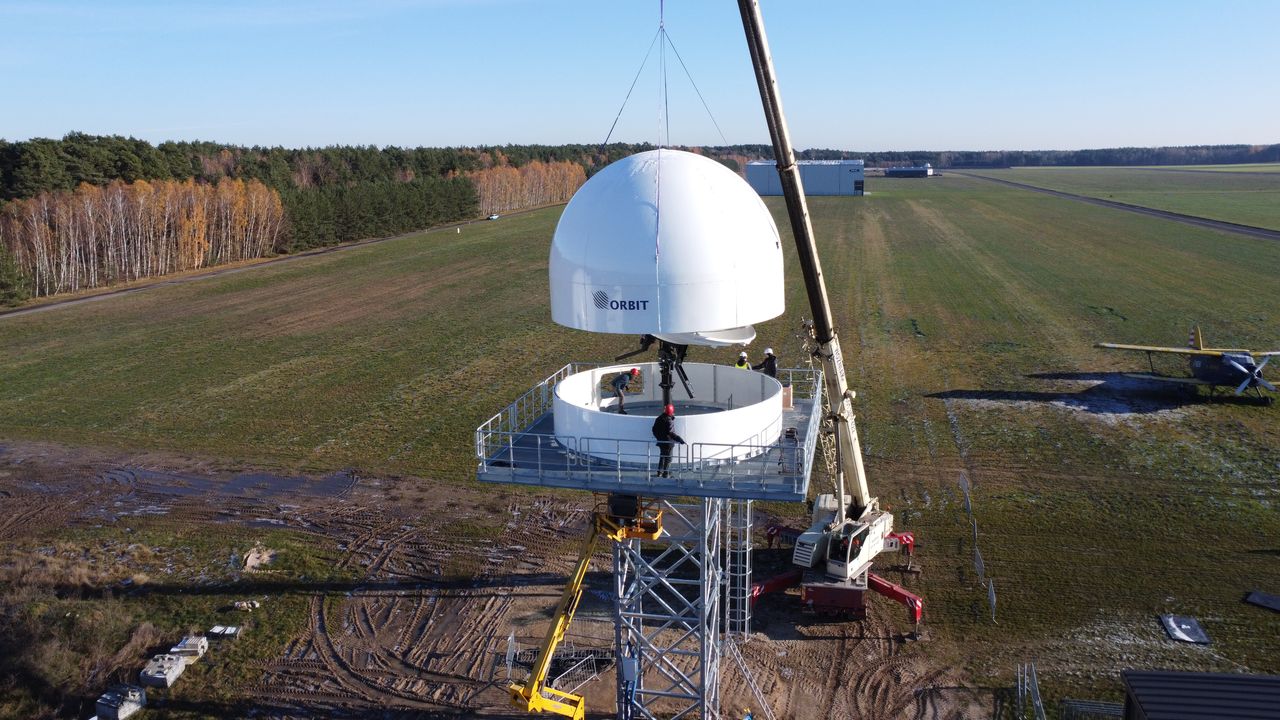
22.11.2023 - Installation of the protective dome
22/11/2023 - A short clip of antenna installation.
In close proximity of the antennas, we plan to set up a technical facility containing transmit and receive devices, such as WORK Microwave GmbH satellite modems compatible with CCSDS and DVB-S2/DVB-S2x standards. In addition to that, the facility will host a center for satellite imaging data processing and storage, equipped with servers with GPU accelerators and disk arrays of the total capacity of 50TB. The station as a whole will be remotely controlled from the above-mentioned Management Center located at the Institute of Radiocommunications. We are also considering the possibility of incorporating the station into one of the global networks of ground stations offering Ground-Station-as-a-Service, e.g. the Atlas Ground Network, RBC Signals or AWS Ground Station.
Management Center - Faculty of Computing and Telecommunications
Managing the operation of ground stations, as well as supervising future missions takes place at the Management Center. It is located at one of the labs in the CAT faculty building at 3 Polanka St. in Poznań. HMI panels currently provide access to all resources of the Piotrowo campus ground station, including visual monitoring of antenna installations and local weather conditions.
Once the Kąkolewo ground station is put into operation, the management center will be moved (though still remaining at the CAT faculty building) and expanded in order to ensure round-the-clock supervision that is necessary for carrying out future space missions.
Cubesat nanosatellites
PolyITAN-3-PUT
Based on the 2018 Letter of Intent, the 2019 Memorandum and the 2020 Cooperation Agreement between the Poznań University of Technology and the Igor Sikorsky Kyiv Polytechnic Institute, in December 2019 we started to implement a joint science and research undertaking called PolyITAN-3-PUT. Its goal is to build an experimental Cubesat nanosatellite and to launch it to the Earth’s orbit at the altitude of approx. 600 km. The satellite will enable the observation of the Earth’s surface with the resolution in the order of 20m per pixel. Initially it was planned that its size would be 3U, but it will probably be enlarged to 12 U in order to carry additional payload.
The PolyITAN-3-PUT satellite is being constructed in both facilities simultaneously. The Kyiv Polytechnic Institute team is responsible for the mechanical structure of the satellite and most of its on-board systems. The main task of the PUT team is to design and build a communication system ensuring fast data transmission over very short communication sessions - in the case of low-orbit satellites the sessions last only a few minutes. PUT will also provide the Ukrainian partners with a number of components necessary for the construction of a ground station compatible with the designed communication system, as well as solar batteries for powering the satellite on the orbit. We will also co-finance launching the satellite to the Earth’s orbit.
In the first phase, the project was financed by an interdisciplinary grant awarded in 2019 by the Rector of the Poznań University of Technology. These funds were used to purchase the components and build the ground station for communications at PUT and KPI, and to purchase the solar batteries and build the transmitter module to be installed in the satellite.
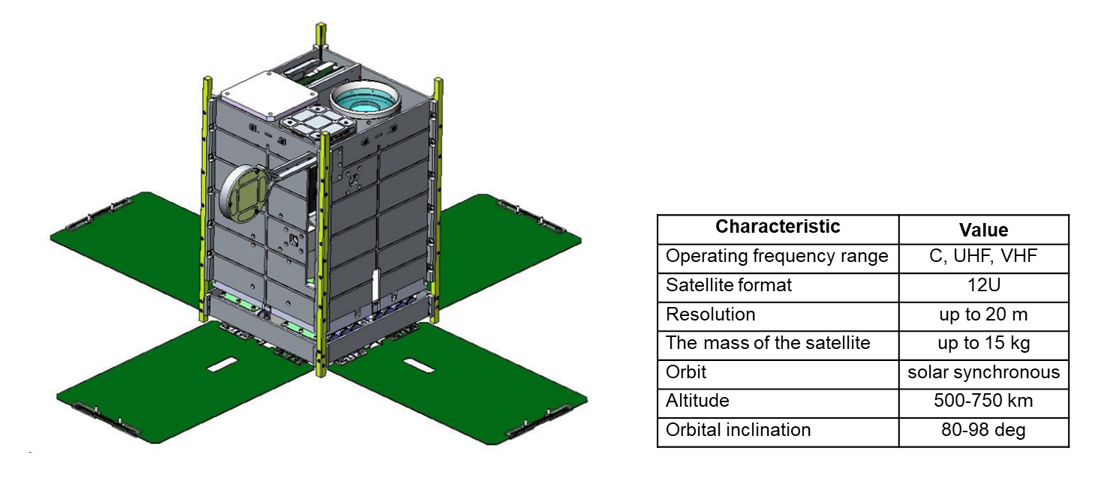
PW6U
The design and implementation of the communication system (except for the transmitter module - see above) is financed primarily by the funds awarded by the National Research and Development Center for carrying out the project titled “Universal nanosatellite platform for research, experimental and commercial type hosted payload missions” (call 6/1.1.1/2019) in consortium with SatRev S.A. (project leader, formerly SatRevolution S.A.). The communication system designed at PUT will also be used in another mission planned by SatRev S.A which is the leading provider and operator of Cubesat nanosatellite systems in the country.
The aim of the project is to design, build and test on orbit an innovative nanosatellite platform enabling experimentation, research, as well as commercial and scientific tests during a single satellite mission. This will help reduce the cost of carrying out such a mission by spreading the fixed costs, i.e. the platform, its launch, permits, etc., over all entities taking part in a given mission. The project’s main challenge is adjusting the platform to the complex requirements set by different satellite instruments (payloads).
The platform will ultimately become a commercial product, and also a service using which interested parties such as colleges, R&D institutes and businesses will be able to carry out their missions at a minimal cost and effort. Using the Cubesat standard will maximally reduce the satellite’s manufacturing and launch costs. The platform will be equipped with adequately designed modules with technical parameters and architecture ensuring compatibility with a wide range of research, experimental and commercial instruments.
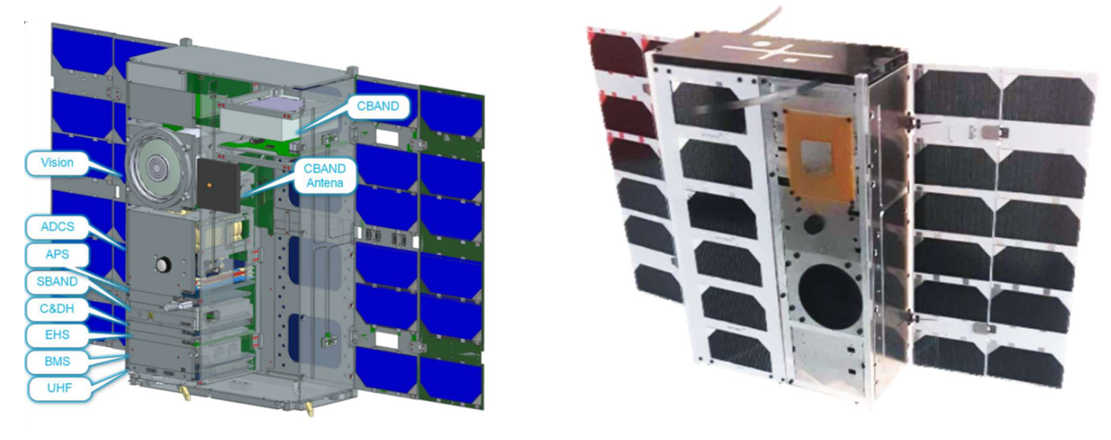
Satellite data transmission system for the C-band
The most common form of communication with Cubesat satellites employs VHF/UHF (2m/70cm) bands requiring the use of relatively simple transceivers and antenna systems. The biggest drawback of this solution is the limited transmission speed, remaining under 19,6kbit/s in the most advanced systems. These speeds are sufficient for transmitting basic telemetry and control data, but over the recent years, Cubesat satellites have come to carry on board increasingly complex research instruments (e.g. high-resolution video cameras for Earth imaging in different wavelength ranges), which calls for transmission of large amounts of data. For this purpose, the S-band is used, and it requires obtaining necessary permits. Satellite communication systems for the S-band are relatively easily available, but their cost is much higher. The advantage of this solution is the possibility of using a network of ground stations providing ground-station-as-a-service options, which offers a high number of communication sessions and higher transmission speeds of up to a dozen or so Mbit/s.
The Institute of Radiocommunications team has taken it upon themselves to build an innovative data transmission system operating in the C-band in the range assigned to radio-amateur space communications. This range is currently being used by a few satellites and the systems operating in it are not commercially available. The key parameters of the system under construction are the following:
- carrier frequency – 5830-5850 MHz
- radio channel bandwidth – 1 MHz, 1,25 MHz, 5 MHz, 10 MHz, 20 MHz
- transmit signal power – 2W (+33dBm)
- modulation – OQPSK with RRC filter spectrum shaping, α = 0,35
- channel coding - turbocode with coding rate in the range of 0.19 - 0.91
- bit rate – 200 kbit/s - 13,5 Mbit/s
A detailed description of the solutions applied in the physical layer of the system can be found in the paper “USAGE OF THE C-BAND FOR COMMUNICATION WITH CUBESAT NANOSATELLITES” presented during the KKRRiT 2022 conference. Both the transmit module onboard the satellite, and the receiver at the ground station were built using the software-defined radio technology. At the heart of the transmit module is an AD9364 integrated transceiver made by Analog Devices, which is compatible with a Zynq7030 SoC programmable logic device by Xilinx (78,6k LUT). The latter element contains an FPGA and a dual-core ARM Cortex A9 processor.
All baseban procedures, such as channel coding, modulation, physical frame formation (adding preambles and midambles) and signal filtering have been implemented in FPGA. The processor, on the other hand, is responsible for the realization of higher-layer protocols (e.g. fragmentation of transmitted files and fragment numbering), module management and communication with the satellite’s on-board computer.
In the system implementation we used a model developed in the Matlab/Simulink environment. It has enabled the simulation of the designed system in the floating point version, number representation for the fixed point version, and generation of the VHDL code for own IP-core modules. The final system integration was performed using the Xilinx Vivado Design Suite.
The transmission module was built according to the Cubesat standard requirements and it is based on the PC/104 standard. The main part of the module consists of an 8-layer PCB covered by a radiator which also contains a transmission amplifier (the photos show the module without a radiator).
Signal reception is performed at the above-described ground stations. As already mentioned, the receiver was also built using the SDR technique, but due to the much higher complexity of algorithms on the receiving side, we employed an SDR module equipped with a Zynq7100 (Type-I) device, offering a few times more resources in the FPGA (277,4k LUT). It sends decoded data packages to a PC responsible for the realization of higher layers of the communication protocol. A simplified version of the receiver has also been developed, based on the USRP B210 SDR module, compatible with a receiver software-defined in GnuRadio and processing received signals offline (Type-II).
The described solution ensures significant system flexibility, which is particularly important due to the limited number of ground stations operating in the required frequency range. As the popularity of universal SDR modules is rising, it is possible for a new station to be easily launched, e.g. by a radio amateur having an adequate parabolic antenna, which only requires downloading a software version of the receiver, registering it with our database and connecting the computer with the installed software to the Internet.
An important feature of the developed data transmission system is the adaptability of transmission parameters, such as signal bandwidth, channel code efficiency and physical frame structure, depending on propagation conditions. However, unlike in the case of typical connection adaptation mechanisms used, e.g., in cellular systems (adaptive modulation and coding), in this system we assume the possibility of significant delays in the return channel (hours/days), which results from, i.a., (spatial) separation of the system’s control function and the ground station offering the return channel. Therefore, a mechanism has been designed consisting in sending to the satellite module so-called session plans defining the moments when transmission parameters are to be altered. Session plans are prepared beforehand (a few hours or days in advance) using machine learning mechanisms, based on the knowledge of satellite trajectory, location of ground stations, as well as the gathered history of instantaneous capacity, correctness of received data packages and other elements, such as the weather forecast at the ground station location. These algorithms are still being researched by one of our PhD candidates.
The Team
Such an ambitious project could never have been possible without the involvement of a group of individuals who often devote their free time to ensure efficient and successful implementation.
Core team members are:
- dr hab. inż. Rafał Krenz – system designer, team leader
- prof. dr hab. inż. Krzysztof Wesołowski – DSP designer (modulation/demodulation), consultant
- dr hab. inż. Maciej Krasicki – FPGA designer (system implementation)
- dr inż. Paweł Sroka – DSP designer (synchronization)
- dr inż. Michał Sybis – DSP designer (channel coding)
- dr inż. Marcin Rodziewicz – DSP designer (system implementation)
- dr inż. Tomasz Markiewicz – software designer (system and applications)
- dr inż. Marek Michalski – communication protocol designer
Launching and testing is also assisted by:
- dr inż. Jarosław Szóstka – radio systems consultant
- inż. Jerzy Gumny – students’ radio amateur club supervisor (SP3PET)
- dr inż. Łukasz Matuszewski
- dr inż. Sławomir Michalak
Valuable help is also provided by PhD candidates and students:
- mgr inż. Ilia Zainutdinov – machine learning module designer
- mgr inż. Wojciech Flakowski – Piotrowo ground station operator
- inż. Nikoloz Glonti
Prepared by: Rafał Krenz
Updated: July 2023